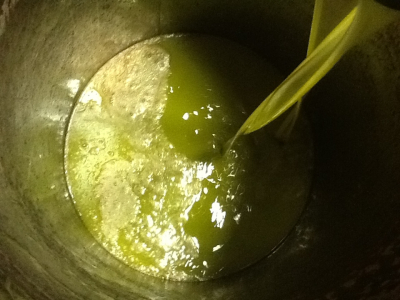The 2014/2015 crop year estimates
After consulting various local experts, we can now present an estimate of this year's crop in the Mediterranean regions. An anticipation of more detailed information that will be available in a few weeks time

The time has come. In just over a month the harvesting season will start in some regions of the Mediterranean Basin, such as parts of Sicily, Chalkidiki in Greece or Extremadura in western Spain. The past year was characterised by Spain’s record crop, which determined low prices until late May, and by the lack of rain in many parts of Andalusia, with a consequent, steady rise in prices from June onwards, which have now reached record levels.
People trading in the oil market need to know in advance what the crop production will be in the Mediterranean countries, so as to better schedule what and when to buy, ensuring the best prices for long term deliveries to their best customers.
As usual, every operator scrutinizes, with some apprehension, all the various development stages of the olive trees, from blossoming to fruit setting and veraison, and always pays the greatest attention to the weather forecast.
After consulting various local experts, we can now present an estimate of this year’s crop in the Mediterranean regions. These are unofficial, provisional figures, but are the reckoning of authorities who have been working in this sector for many years.
In a few weeks’ time, local authorities will release more detailed estimates, and we will keep you constantly updated. In this respect, the International Olive Council will meet on October 7 to elaborate the data supplied by all the member countries.
Let’s start with Greece
2013/2014 was a disastrous year for Greece, and many estimate that less than 100,000 tons of olives were harvested. Crete in particular, an island famous for the quality of its extra virgin olive oil, suffered the most.
Experts predict that overall, the 2014/2015 crop year should yield 250-285,000 tons of olives.
More detailed estimates have been made for the following regions:
• Crete: 100/110,000 tons
• The Peloponnese: 90/100,000 tons
• Central Greece: 40/50,000 tons
• Greek islands: 20/25,000 tons.
Spain
From September 1, 2013, to August 30, 2014, the Observatory of the University of Jaen recorded an annual precipitation of about 300 mm.
This is one of the lowest values measured in the past 100 years. Moreover, most of the rain fell in autumn and winter, and hardly any during the spring and summer months.
According to the Ministerio de Agricultura, Alimentación y Medio Ambiente de España, of the 2,584,564 hectares of olive groves present in this country (data referred to the year 2013), only 731,025 possess irrigation systems (regadío), whereas the remaining 1,853,539 do not (secano).
Considering last year’s extended harvesting season (production continued until late March) and the alternate bearing (in Spanish, vecería) pattern of this plant species, it can be reasonably expected that this year’s crop will be extremely bad.
And here lies the problem: Spain produces roughly half of the world’s olive oil and when productivity levels sway, the consequences on the market prices are felt world-wide.
Some agricultural organizations estimate (worst-case scenario) production levels similar to those of two years ago (approximately 620,000 tons), whereas other sources are more optimistic, and believe that if it rains in September and October, the crops could range between 700,000 and one million tons of olives.
In greater detail, the outlook is poor in the provinces of Jaen and Cordoba (yielding last year 750,000 and 360,000 tons, respectively, and totting up to 62.5% of the overall national production). Things seem more promising in Seville, and fairly good in the environs of Malaga. On the other hand however, the situation is bad in Castilla la Mancha (Ciudad Real, Toledo).
Tunisia
A record crop is predicted for this country, which many believe will range between 250,000 and 280,000 tons. What matters however is the oil content of the olives, which in some varieties can amount to 25% of their weight. This parameter however depends on other factors too, including the weather in early autumn. Up to now, there has been abundant rainfall, evenly distributed throughout these last weeks.
As regards productivity levels, the most important olive districts are those of Sfax, Kairouan, and Sahel (Sousse, El Jem), followed by the northern part of the country (the region of Tunis, which is also renowned for its table olives).
Turkey
The forecasted crop for this county is remarkably good, i.e. about 250,000 tons.
In greater detail, the outlook for the environs of Izmir, Aydin and Mugla is very good, both from a qualitative and quantitative point of view. On the other hand, the situation is not as rosy in the northern part of the country, where most of the extra virgin olive oil is made. Approximately 65% of the crop will be used to produce lampante and virgin oil, whereas the remaining 35% is for extra virgin oil.
Morocco
The outlook is poor for Morocco, with production levels forecasted between 60 and 80,000 tons. Most of the olives this year will be used to produce extra virgin oil instead of the more traditional lampante and virgin oils.
Portugal
In this case, the outlook is fairly positive, and experts believe that the crop levels will be around 60,000 tons.
Other countries too should be taken into account, such as Algeria, Cyprus, Egypt, France, Croatia, Syria, Libya and so forth. Considering the current political situation, and its repercussion on the national economies, no serious conjectures can be made. Moreover, these countries still possess stocks of oil, although considering the large amounts recently placed on the market, we can reasonably believe that they are limited. However, olive oil supply only partly depends on production: a key role this year will be played by the reduced demand brought about by the increased wholesale prices, and subsequently, the retail ones.
Photo by Luigi Caricato
To comment you have to register
If you're already registered you can click here to access your account
or click here to create a new account


Comment this news